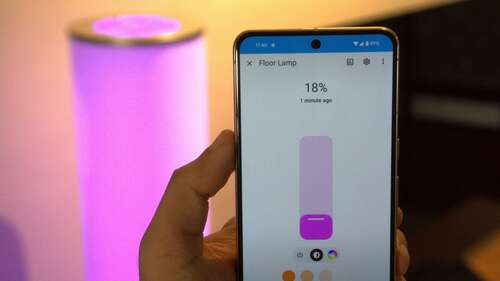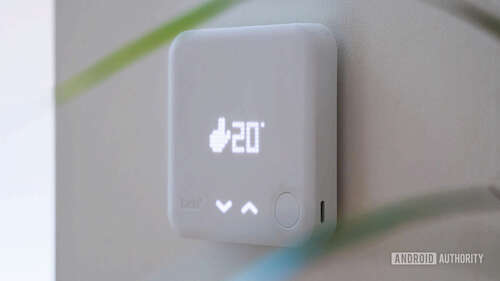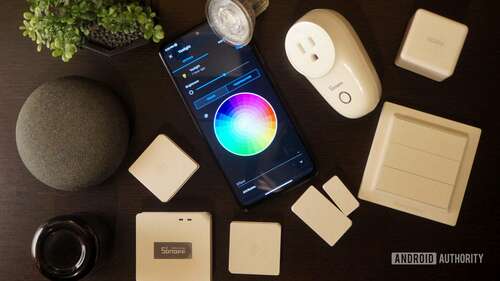
Calvin Wankhede / Android Authority
Talk about building a smart home online and I can almost guarantee that someone will call you lazy for not wanting to get off the couch and manually flip a light switch. But what most don’t realize is that home automation can save energy, and money too! While adding more network-connected devices may sound like it would only add another burden on your power bills, the opposite is true in my experience. So if you’re looking for a reason beyond convenience to invest in a smart home, here’s how my setup saves energy and why I recommend it.
Let there be light (and darkness)

Calvin Wankhede / Android Authority
Let’s start with a simple automation, which offers equal parts convenience and energy-savings: smart lighting controlled via a motion sensor. My colleague Rita has already written about how she uses motion sensors to control her hallway lights and I whole-heartedly echo that sentiment.
As you can see in the automation above, I have a motion sensor placed near my front door that turns on the overhead light when it detects someone. Then, if it doesn’t detect any motion three minutes later, the light automatically switches off. This way, I don’t have to worry about flicking the light switch as someone arrives or leaves — it all happens automatically.
Of course, you won’t save much energy if you’re automating a single lightbulb based on motion, but the same principle can apply to entire rooms as well. I have a similar motion-based automation in my large kitchen, which controls 150 watts worth of overhead and countertop lighting.
Forgetting to switch off lights can be expensive, so have your smart home do it automatically.
With soaring energy costs in some parts of the world like Western Europe, forgetting to switch off those lights for just a few extra hours every day could add a serious burden to your power bill. Considering Germany’s €0.3 per kWh energy rate as a worst case scenario, 150W of lighting left on for three hours everyday would cost an extra €49 per year.
The best part about motion sensors is that they work regardless of the occupant, so you don’t have to worry about messing with voice commands or phone apps. They’re child-proof too, in case you have forgetful kids around a lot.
Efficient climate control

Robert Triggs / Android Authority
According to the U.S. Energy Information Administration, cooling and heating accounts for over half of the average American electric bill. Thankfully, there are plenty of ways a smart home can lower energy consumption.
I live in a warm and humid climate, where temperatures exceed 86°F or 30°C almost year round. Leaving the air conditioning running all day would cost me a pretty penny, but changing the setting in each room requires constant attention. So instead, I use automations similar to my lighting setup to ensure that empty rooms aren’t climate controlled.
Many smart thermostats can detect presence these days, and can serve as drop-in replacements for older thermostats. Since I live in an area without centralized cooling or heating, I use a motion sensor coupled with a Wi-Fi-based IR blaster. That’s just $25 per room if you have remote-based mini split AC or heat pump units.
A smart thermostat or automation can detect presence to automatically regulate cooling or heating.
At night, I also run an automation that only turns on the air conditioner for a few minutes every couple of hours. The remaining duration is serviced by a ceiling fan, which the U.S. Department of Energy recommends as an energy saving measure. I could fiddle with the temperature setting on my AC to find the right balance, but turning off the AC for long stretches gives me more control over its energy consumption.
A smart thermostat helps with heating just as well. You can set a schedule if your home stays empty for most of the day. And if you’re concerned about returning to a freezing house, a location-based automation can help ensure that your smart home starts warming ahead of time. That’s veering into the convenience territory more than energy savings, but why not have both?
Cheap energy during non-peak hours

Calvin Wankhede / Android Authority
With many utility providers around the world, you can choose between two kinds of billing: flat rate and time-of-use. The former is simple enough to understand but with time-of-use plans, your per-unit rate will fluctuate depending on the time of day. Power plants often have to generate a minimum amount of electricity regardless of demand, so utility companies will offer incentives such as lower rates during non-peak hours.
I would recommend switching to a time-of-use plan if you can schedule your heavy appliance usage to coincide with off-peak hours. This is typically overnight when the majority of people fall asleep. But some providers also offer reduced rates outside of the typical 9 to 5 commercial period.
Smart plugs can help reduce energy costs if your provider offers off-peak hour incentives.
You can use smart plugs to schedule energy hogs like your dishwasher and clothes dryer. The same goes for extended download sessions on your gaming PC or console. And if you want to take this smart home hack even further, you could use large batteries to store energy and discharge them during peak hours. In that vein, electric vehicle owners can save a lot if they only charge when electricity is cheapest.
If a battery sounds like overkill, I’d recommend looking into thermostats that can be linked to your utility provider’s time-of-use schedule. With good insulation, you can cool or heat your home in the wee hours of the morning and coast off the residual effects until evening when energy is cheap again.
Bonus: Save on your water bill
While I’ve focused on electric usage so far, you may also have a water bill to worry about. If you own a garden, consider getting real-time soil moisture sensors. Coupled with a smart sprinkler system, you can control the amount of water dispensed and even skip irrigation altogether on rainy days.
From a more practical perspective, though, I would recommend investing in water leak sensors like this Zigbee-based Aqara one. IKEA just released one too, but it may take a while to reach store shelves worldwide. Deploy them wherever you foresee plumbing issues like the laundry room, basement, or at the base of a water heater. It can save you from incurring significant damage to your property and ensure you don’t find out about leaks from an outrageous water bill.
While setting up a connected smart home may seem daunting, the truth is that there’s a platform for everyone. I personally favor offline smart homes with Home Assistant but you could also achieve most of the above with an off-the-shelf system like Google Nest or Samsung’s SmartThings. And once you have it set up, I can almost guarantee that you’ll wonder how you ever lived without a smart home.

